Here’s Every Total Solar Eclipse Happening In Your Lifetime. Is This Year Your Best Chance?

Here’s every total solar eclipse happening in your lifetime. Is this year your best chance?
On Aug. 21, a total solar eclipse will be visible from the continental United States. It’ll be the first to traverse coast to coast in nearly a century. Learn more about past and future eclipses: See full graphic.
More Posts from T-sci-eng and Others
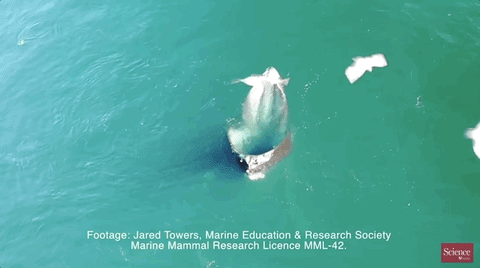
apparently one whale years ago was observed doing this for hours and now more and more whales in the area are seen copying it so we think it’s a whole new behavior and it seems to be a response to shrinking food sources.
Instead of expending any energy actively hunting, the whale just holds its mouth open wherever fish are being hunted by birds. To escape the birds, the fish try to hide in the whale’s mouth because it’s a darker area that looks like shelter. …They’re turning into giant, sea-mammal pitcher plants.
https://onlinelibrary.wiley.com/doi/epdf/10.1111/mms.12557?referrer_access_token=bXLTS5BeSw_vlIKHkM0bYIta6bR2k8jH0KrdpFOxC654HjreJ8D19K86UreR5JPsSRb0CuGhiJSV1L1ht-N1Gf_K_1a9MREFzQGU9oJDNctsKDin_HXcYEdsLg3EbcTl
Solar System: Things to Know This Week
Reaching out into space yields benefits on Earth. Many of these have practical applications — but there’s something more than that. Call it inspiration, perhaps, what photographer Ansel Adams referred to as nature’s “endless prospect of magic and wonder.“
Our ongoing exploration of the solar system has yielded more than a few magical images. Why not keep some of them close by to inspire your own explorations? This week, we offer 10 planetary photos suitable for wallpapers on your desktop or phone. Find many more in our galleries. These images were the result of audacious expeditions into deep space; as author Edward Abbey said, "May your trails be crooked, winding, lonesome, dangerous, leading to the most amazing view.”

1. Martian Selfie
This self-portrait of NASA’s Curiosity Mars rover shows the robotic geologist in the “Murray Buttes” area on lower Mount Sharp. Key features on the skyline of this panorama are the dark mesa called “M12” to the left of the rover’s mast and pale, upper Mount Sharp to the right of the mast. The top of M12 stands about 23 feet (7 meters) above the base of the sloping piles of rocks just behind Curiosity. The scene combines approximately 60 images taken by the Mars Hand Lens Imager, or MAHLI, camera at the end of the rover’s robotic arm. Most of the component images were taken on September 17, 2016.
800 x 600
1024 x 768
1280 x 1024
1600 x 1200
1280 x 800
1440 x 900
1920 x 1200

2. The Colors of Pluto
NASA’s New Horizons spacecraft captured this high-resolution, enhanced color view of Pluto on July 14, 2015. The image combines blue, red and infrared images taken by the Ralph/Multispectral Visual Imaging Camera (MVIC). Pluto’s surface sports a remarkable range of subtle colors, enhanced in this view to a rainbow of pale blues, yellows, oranges, and deep reds. Many landforms have their own distinct colors, telling a complex geological and climatological story that scientists have only just begun to decode.
800 x 600
1024 x 768
1280 x 1024
1600 x 1200
1280 x 800
1440 x 900
1920 x 1200

3. The Day the Earth Smiled
On July 19, 2013, in an event celebrated the world over, our Cassini spacecraft slipped into Saturn’s shadow and turned to image the planet, seven of its moons, its inner rings — and, in the background, our home planet, Earth. This mosaic is special as it marks the third time our home planet was imaged from the outer solar system; the second time it was imaged by Cassini from Saturn’s orbit, the first time ever that inhabitants of Earth were made aware in advance that their photo would be taken from such a great distance.
800 x 600
1024 x 768
1280 x 1024
1600 x 1200
1280 x 800
1440 x 900
1920 x 1200

4. Looking Back
Before leaving the Pluto system forever, New Horizons turned back to see Pluto backlit by the sun. The small world’s haze layer shows its blue color in this picture. The high-altitude haze is thought to be similar in nature to that seen at Saturn’s moon Titan. The source of both hazes likely involves sunlight-initiated chemical reactions of nitrogen and methane, leading to relatively small, soot-like particles called tholins. This image was generated by combining information from blue, red and near-infrared images to closely replicate the color a human eye would perceive.
800 x 600
1024 x 768
1280 x 1024
1600 x 1200
1280 x 800
1440 x 900
1920 x 1200

5. Catching Its Own Tail
A huge storm churning through the atmosphere in Saturn’s northern hemisphere overtakes itself as it encircles the planet in this true-color view from Cassini. This picture, captured on February 25, 2011, was taken about 12 weeks after the storm began, and the clouds by this time had formed a tail that wrapped around the planet. The storm is a prodigious source of radio noise, which comes from lightning deep within the planet’s atmosphere.
800 x 600
1024 x 768
1280 x 1024
1600 x 1200
1280 x 800
1440 x 900
1920 x 1200

6. The Great Red Spot
Another massive storm, this time on Jupiter, as seen in this dramatic close-up by Voyager 1 in 1979. The Great Red Spot is much larger than the entire Earth.
800 x 600
1024 x 768
1280 x 1024
1600 x 1200
1280 x 800
1440 x 900
1920 x 1200

7. More Stormy Weather
Jupiter is still just as stormy today, as seen in this recent view from NASA’s Juno spacecraft, when it soared directly over Jupiter’s south pole on February 2, 2017, from an altitude of about 62,800 miles (101,000 kilometers) above the cloud tops. From this unique vantage point we see the terminator (where day meets night) cutting across the Jovian south polar region’s restless, marbled atmosphere with the south pole itself approximately in the center of that border. This image was processed by citizen scientist John Landino. This enhanced color version highlights the bright high clouds and numerous meandering oval storms.
800 x 600
1024 x 768
1280 x 1024
1600 x 1200
1280 x 800
1440 x 900
1920 x 1200

8. X-Ray Vision
X-rays stream off the sun in this image showing observations from by our Nuclear Spectroscopic Telescope Array, or NuSTAR, overlaid on a picture taken by our Solar Dynamics Observatory (SDO). The NuSTAR data, seen in green and blue, reveal solar high-energy emission. The high-energy X-rays come from gas heated to above 3 million degrees. The red channel represents ultraviolet light captured by SDO, and shows the presence of lower-temperature material in the solar atmosphere at 1 million degrees.
800 x 600
1024 x 768
1280 x 1024
1600 x 1200
1280 x 800
1440 x 900
1920 x 1200

9. One Space Robot Photographs Another
This image from NASA’s Mars Reconnaissance Orbiter shows Victoria crater, near the equator of Mars. The crater is approximately half a mile (800 meters) in diameter. It has a distinctive scalloped shape to its rim, caused by erosion and downhill movement of crater wall material. Since January 2004, the Mars Exploration Rover Opportunity has been operating in the region where Victoria crater is found. Five days before this image was taken in October 2006, Opportunity arrived at the rim of the crater after a drive of more than over 5 miles (9 kilometers). The rover can be seen in this image, as a dot at roughly the “ten o'clock” position along the rim of the crater. (You can zoom in on the full-resolution version here.)
800 x 600
1024 x 768
1280 x 1024
1600 x 1200
1280 x 800
1440 x 900
1920 x 1200

10. Night Lights
Last, but far from least, is this remarkable new view of our home planet. Last week, we released new global maps of Earth at night, providing the clearest yet composite view of the patterns of human settlement across our planet. This composite image, one of three new full-hemisphere views, provides a view of the Americas at night from the NASA-NOAA Suomi-NPP satellite. The clouds and sun glint — added here for aesthetic effect — are derived from MODIS instrument land surface and cloud cover products.
Full Earth at night map
Americas at night
Discover more lists of 10 things to know about our solar system HERE.
Make sure to follow us on Tumblr for your regular dose of space: http://nasa.tumblr.com

Hackaday Useful Tools Links
So I am an avid reader of Hackaday for a long time now and they have been putting out a lot of great introductions to tools and processes to get makers up to speed on the resources that are available. This is just a splattering of links that I have found lately that you guys might be interested in.
DC Motors
Lessons in Small Scale Manufacturing
Grinding Gears: Figuring out gear ratios
Tools of the trade: Injection Molding
Are todays engineers worse?
How to nail a technical presentation
Tools of the trade: Vacuum Forming
The Art and Science of Bending Sheetmetal
A how-to of designing, fab, and assembly with structural framing systems (t slot)
Machine learning foundations
A machine shop in a box
How to: Cold resin casting
Join the GUI generation: Qtcreator
Do you guys have any other great resources that you’d like to share and/or are you enjoying this type of content?




Elevated Bus That Drives Above Traffic Jams

Proof without words - Pi
This was intended to be posted on Pi-day earlier this month, but somehow that didn’t happen.
Hope this beautiful pi gif on this sizzling Saturday puts a smile on your face and guides you through the day.
Have a good one!
Photo credit: Lucas V. Barbosa via Wikimedia Commons
** FYP’s Pi-day post ( if you are interested )

You might be an engineer if you know how long a zeptosecond is. (It's a trillionth of a billionth of a second!) http://ow.ly/uUUb30caXrH
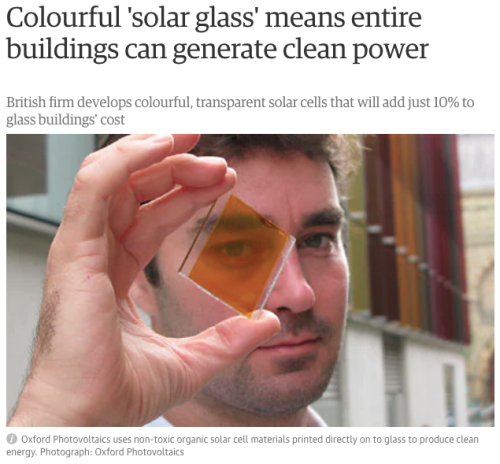

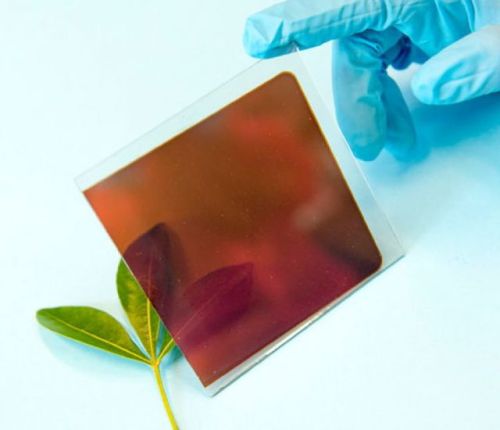
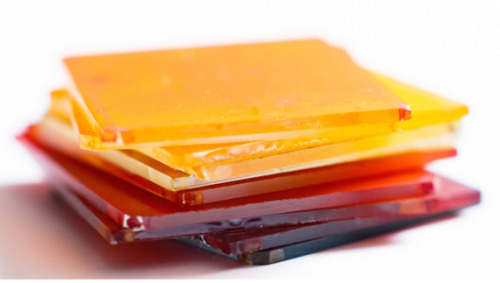
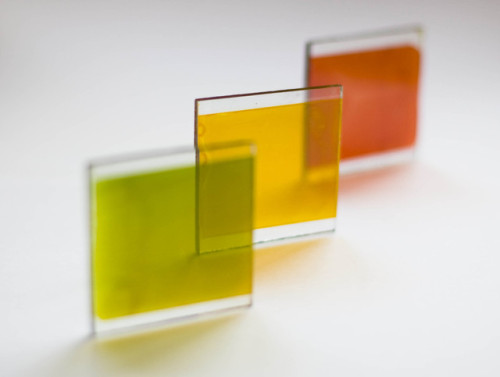
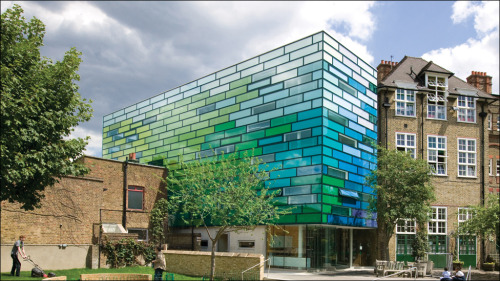
Just imagine a world full of beautiful stained glass windows which also generate electricity…
[Oxford Photovoltaics]
Solar System: Things to Know This Week
10 Tools for the Armchair Astronaut, or How to Explore the Solar System from Home
At this very moment, spacecraft are surveying the solar system, from Mars, to Saturn, to Pluto and beyond. Now you can ride along to see the latest discoveries from deep space. For this week’s edition of 10 Things, we’ve assembled a toolkit of 10 essential resources for the desktop astronaut.

1. It’s Like Facebook, but for Planets
Or is it more of a Hitchhiker’s Guide to the Solar System? Whatever one calls it, our planets page offers quick rundowns, as well as in-depth guides, for all the major bodies in the solar system. Explore from the sun all the way to the Oort Cloud.
+ Peruse the planets + See how objects in the solar system stack up against each other

2. Keep Your Eyes on This One
If you still haven’t tried Eyes on the Solar System, you’re missing out. This free, downloadable simulation app lets you tour the planets and track the past, current and future positions of spacecraft–all in 3D. Eyes on the Solar System uses real NASA data to help you take a virtual flight across both space and time.
+ Prepare for departure

3. Dateline: Deep Space
With so much exploration underway, discoveries and new insights into the solar system come at a pace that borders on bewildering. NASA is rewriting the textbooks, literally, on a regular basis. Relax, though: there are several easy ways to stay up to date with what’s happening in space.
+ See the latest headlines + Stay connected on social media: Twitter, Facebook, Instagram + Find more top NASA social media accounts

4. Space? There’s an App for That
NASA offers phone and tablet apps for star gazing, pictures, news, 3D tours, satellite tracking, live NASA TV and many other kinds of info.
+ Start downloading + See other cool apps

5. A (Very) Long Distance Call
We’re in constant communication with spacecraft all over the solar system. The Deep Space Network is a global network of giant antenna dishes that makes it possible. With this online app, you can learn how it works – and even see which spacecraft are phoning home right now.
+ Deep Space Network (DSN) Now

6. Collect ‘Em All
Spacecraft 3D is an augmented reality (AR) application that lets you learn about and interact with a variety of spacecraft that are used to explore our solar system, study Earth and observe the universe. Print out the AR target and your camera will do the rest, making the spacecraft appear in 3D right in front of you. Learn more about these robotic explorers as they pop up on your desk, in your hand, or on your dog’s head.
+ Download Spacecraft 3D + See more cool 3-D resources from NASA

7. Ever Wanted to Drive a Mars Rover?
This site will give you a 3D look at the Mars Curiosity rover, along with some of the terrain it has explored. It will even let you take the controls.
+ Experience Curiosity

8. More E-Ticket Attractions
But wait, there’s more. NASA offers a variety of other fascinating (and free) online experiences, all based on actual data from real missions. Here are a few to explore:
+ Mars Trek + Vesta Trek + Moon Trek

9. The Universe Is Our Classroom
Studying the solar system makes for a compelling route into learning and teaching science, engineering and math. We have some great places to start.
+ Find resources for teachers + Build your own solar system with your classroom

10. Bring It on Home
After you’ve toured the far reaches of the solar system, you can always come home again. When you have spent time studying the harsh conditions on our neighboring planets, the charms of a unique paradise come into sharp focus, the place we call Earth.
+ Watch a real-time video feed from Earth orbit + See a daily global view of our planet from a million miles away + Hold the earth in your hands with the Earth Now mobile app
Discover more lists of 10 things to know about our solar system HERE.
Follow us on Tumblr for your regular dose of space: http://nasa.tumblr.com

This month on FYP!
It has been a blissful month in physics with the nobel prize for the work on gravitational waves and LIGO swiftly striking back with the detection of a neutron star merger.
At FYP! we have started to dwell a little bit into the essence of condensed matter physics while exploring some really cool science and engineering along the way.
Here’s what went down on FYP! this month:

Nobel prize in physics article on Gravitational waves
Gravitational waves, Light and Merging neutron stars

Paramagnets and Combinatorics
Diamagnetic levitation - Ig Nobel prize(2000)
Levitating frogs and superconductivity

Revisiting rolling shutter
Cooking with a computer (the importance of a heat sink on a computer)
Cartoon laws of physics
Beautiful proofs (#3) - Euler’s sum
Have a great day!
-
 ksuderekc liked this · 1 year ago
ksuderekc liked this · 1 year ago -
 davvero-annoiatx liked this · 1 year ago
davvero-annoiatx liked this · 1 year ago -
 synmirror reblogged this · 2 years ago
synmirror reblogged this · 2 years ago -
 migrasuicide liked this · 5 years ago
migrasuicide liked this · 5 years ago -
 anonononomynous liked this · 6 years ago
anonononomynous liked this · 6 years ago -
 starrdustix liked this · 7 years ago
starrdustix liked this · 7 years ago -
 ouranien reblogged this · 7 years ago
ouranien reblogged this · 7 years ago -
 mahaou1 liked this · 7 years ago
mahaou1 liked this · 7 years ago -
 devildog-94-blog liked this · 7 years ago
devildog-94-blog liked this · 7 years ago -
 chi838-blog liked this · 7 years ago
chi838-blog liked this · 7 years ago -
 delusivephantomofhope reblogged this · 7 years ago
delusivephantomofhope reblogged this · 7 years ago -
 knumsky reblogged this · 7 years ago
knumsky reblogged this · 7 years ago -
 knumsky liked this · 7 years ago
knumsky liked this · 7 years ago -
 squishymaya reblogged this · 7 years ago
squishymaya reblogged this · 7 years ago -
 rmrhodes reblogged this · 7 years ago
rmrhodes reblogged this · 7 years ago -
 chuntyanderson liked this · 7 years ago
chuntyanderson liked this · 7 years ago -
 nickspyr liked this · 7 years ago
nickspyr liked this · 7 years ago -
 sanctadifferentia liked this · 7 years ago
sanctadifferentia liked this · 7 years ago -
 magicmagica reblogged this · 7 years ago
magicmagica reblogged this · 7 years ago -
 strengthofmayhem liked this · 7 years ago
strengthofmayhem liked this · 7 years ago -
 tpt-moved reblogged this · 7 years ago
tpt-moved reblogged this · 7 years ago -
 theworldiswideenough reblogged this · 7 years ago
theworldiswideenough reblogged this · 7 years ago -
 maqqy96 reblogged this · 7 years ago
maqqy96 reblogged this · 7 years ago -
 whimchic reblogged this · 7 years ago
whimchic reblogged this · 7 years ago -
 jmp-m2 reblogged this · 7 years ago
jmp-m2 reblogged this · 7 years ago -
 jmp-m2 liked this · 7 years ago
jmp-m2 liked this · 7 years ago -
 unstoppabledavid liked this · 7 years ago
unstoppabledavid liked this · 7 years ago -
 hauntography liked this · 7 years ago
hauntography liked this · 7 years ago -
 vulpes-aestatis reblogged this · 7 years ago
vulpes-aestatis reblogged this · 7 years ago -
 a10k liked this · 7 years ago
a10k liked this · 7 years ago -
 therhymeminister reblogged this · 7 years ago
therhymeminister reblogged this · 7 years ago -
 regicide1997 liked this · 7 years ago
regicide1997 liked this · 7 years ago -
 thenigerianonlinenewspaper reblogged this · 7 years ago
thenigerianonlinenewspaper reblogged this · 7 years ago -
 jarratchet reblogged this · 7 years ago
jarratchet reblogged this · 7 years ago -
 subgoogle liked this · 7 years ago
subgoogle liked this · 7 years ago -
 fl0rescent-ad0lescent reblogged this · 7 years ago
fl0rescent-ad0lescent reblogged this · 7 years ago -
 tehawkwardartist liked this · 7 years ago
tehawkwardartist liked this · 7 years ago -
 ibboard reblogged this · 7 years ago
ibboard reblogged this · 7 years ago -
 omgcyndaquil liked this · 7 years ago
omgcyndaquil liked this · 7 years ago -
 satanic-koala liked this · 7 years ago
satanic-koala liked this · 7 years ago -
 atomic-darth reblogged this · 7 years ago
atomic-darth reblogged this · 7 years ago -
 folly-of-alexandria reblogged this · 7 years ago
folly-of-alexandria reblogged this · 7 years ago -
 folly-of-alexandria liked this · 7 years ago
folly-of-alexandria liked this · 7 years ago -
 inexorable-as-the-dawn reblogged this · 7 years ago
inexorable-as-the-dawn reblogged this · 7 years ago -
 inexorable-as-the-dawn liked this · 7 years ago
inexorable-as-the-dawn liked this · 7 years ago -
 mscbeautiful liked this · 7 years ago
mscbeautiful liked this · 7 years ago -
 calelian liked this · 7 years ago
calelian liked this · 7 years ago -
 wolfdog127 reblogged this · 7 years ago
wolfdog127 reblogged this · 7 years ago









